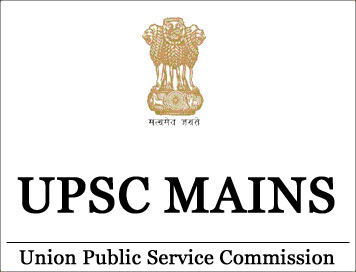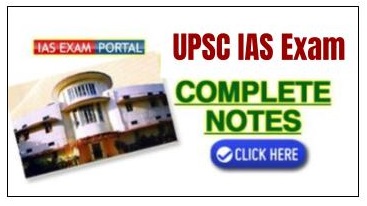(FREE) UPSC Current Affairs 2025 PDF
NEW! The Gist (SEP-2025) | E-BOOKS
(Download) UPSC MAINS 2018 - LAW Paper-2

(Download) UPSC 2018 LAW Paper II
Exam Name: UPSC 2018 LAW Paper II
Time Allowed : 3.00 Hrs
Maximum Marks : 250
SECTION "A"
Q.1 Answer the following about 150 words each. Support your answer with legal previsions and judicial pronouncements. (10×5=50)
(a) “Whether the maxim „actus non facit reum
nisi mens sit rea‟ in general and the Common Law doctrine of „mens rea‟ as an
independent doctrine in particular are relevant in the interpretation of
provisions of the Indian Penal Code?” Explain the above in the light of justice
opinions and judicial pronouncements.
(b) Critically examine the development of the law relating to remoteness
of damages. Which test do you prefer for deciding the question of remoteness of
damages and why? Give reasons for your answer.
(c) In view of the consistent opinion rendered in Aruna Shanbaug case and
also considering the socio-legal medical and constitutional significance of
Euthanasia, do you consider that the view expressed by the Constitutional Bench
of Supreme Court in Common Cause (Architecture Regd. Society) vs. Union of India
(2018) is conclusive? Common critically.
(d) “The paramount task of the law of torts is to pay an important
regulatory role in the adjustment of losses and eventuate allocation of their
cost and that until the emergence of the welfare state, the law of torts
provided the only source for alternating the plight of the injured.” In the
light of the above statement, discuss the nature and scope of law of torts and
substantiate your answer with leading case law. Also discuss the position in
India.
(e) “Right of private defence to the extent of causing death of an
assailant cannot be based on the surmises and speculation. The accused must be
under a bonafide fear of death or grievous hurt would otherwise be the
consequence of the assault, if he does not defend. To determine the existence of
apprehension is always a question of fact.” Explain the above proposition in the
light of existing legal
provisions and judicial decisions.
Q.2
(a) “Section 300 (4) of the Indian Penal Code will be applicable in cases
where the knowledge of the offender as to the probability of death of a person
approximates to practical certainty.” Illustrate the above statement. 20
(b) Explain the maxim „volenti non fit injuria‟. Is the knowledge of risk
not the same thing as consent to suffer the risk? Support your answer with
judicial pronouncement. 15
(c) A group of persons decided to act in concert with common intention to
commit rape on victim (V). More than one person from the group, in furtherance
of common intention, acted in concert in the commission of rape as per
pre-arranged plan. One lady member of the group facilitated the commission of
such rape by many persons of the group. The essence of liability in such
situation being the existence of common intention. Decide the criminal liability
of the following members of the group
-
Who were members of the plan but did not participate in the act
-
Who committed rape
-
The sole lady member who lend full facilities for the commission of rape.
Q.3
(a) Six people decided to carry out dacoity of a bank in a village. They
went to the bank to commit it, but were intercepted by police. All of them ran
away. While the police was chasing them, one of the dacoits (X) killed Mr.Y. who
tried to obstruct his way. Decide liability for the murder committed by one of
them in view of Sections 391 and 396 of the Indian Penal Code. 15
(b) “A master is liable for all acts of his servant done during the
course of employment.” Explain it in general and from Indian perspective in
particular. 15
(c) Corruption by public servants has become gigantic problem. Large
scale corruption retards the nation-building activities and everyone has to
suffer on their count. The efficiency of public servant would improve only when
the public servant does his duty truthfully and honestly. Therefore, in such
cases, it is difficult to accept any plea of leniency in sentence (State of MP
Vs.Shambhu Dayal Nagar (2006) 8 SCC 693). Comment. 20
Q.4
(a) “Plea bargaining in India is the truncated one, as it is applicable
to sentence only and not to the charge. Equally it is a court-monitored
procedure, except that it provides a clause
related to compensation to the victim.” Critically analyse the retention of such
provision in the Indian Criminal Justice dispensation. Also suggest reforms, if
any you understand are necessary. 15
(b) “Rule of absolute liability has been expounded by the apex court in
M.C.Mehta‟s vs Union of India.” How far is it a reform over the rule of strict
liability? Comment. 15
(c) “For fixing criminal liability of a doctor under Section 304-A of the
Indian Penal Code, it is necessary to prove that the act complained against the
doctor must show such rashness or negligence of such higher degree as to
indicate mental state which can be described as totally apathetic towards
patient. Such gross negligence alone is punishable.” In the light of the latest
judicial pronouncement, explain the above statement. 20
DOWNLOAD UPSC MAINS LAW OPTIONAL PAPERS PDF
DOWNLOAD UPSC MAINS GS 10 Year PAPERS PDF
DOWNLOAD UPSC MAINS GS SOLVED PAPERS PDF
DOWNLOAD UPSC PRE GS 10 Year PAPERS PDF
Printed Study Material for IAS PRE cum Mains General Studies
SECTION-"B"
Q.5 Answer the following in about 150 words each. Support your answer with relevant legal provisions and decided cases: 10×5=50
(a) If certain goods are displayed either in a
show window or inside the shop and such goods bear price tags, discuss whether
such display amounts to an offer to sell. Explain the distinction between offer
and invitation to offer with the help of decided cases.
(b) In an action to avoid a contract on the ground of undue influence, the
plaintiff has to prove two points. Explain those points and different kinds of
relations leading to presumption of undue influence which vitiates free consent.
(c) Section 28 of the Indian Contract Act, 1872 makes agreements in
restraint of legal proceedings void. Are there any exceptions to this rule?
Discuss with the help of relevant provisions and decided cases.
(d) Public Interest Litigation (PIL) in India, of late has been used not
only to represent the unrepresented and weak but also to advance the interest of
others. Comment on the recent trends relating to the application, use and misuse
of PIL in India.
(e) In spite of introduction and recognition of Technological Protection
Measures (TPMSs), the digital copyright continues to be unsafe and unsecured.
Explain the impact of the 2012 Amendments to the Copyright Act, 1957 on the
protection of digital copyright in India.
Q.6
(a) “It is well settled that if and when there is frustration, the
dissolution of the contract occurs automatically. It does not depend on the
choice or election of either party. It depends on the effect of what has
actually happened on the possibility of performing the contract.”Discuss the
effects of frustration of contract. 20
(b) “If a person falsely represents that he is an agent of another, the
principal may ratify the act even though the same was done without his
authority.” Discuss, in the light of the above statement, the essentials of
valid ratification and its effect. 15
(c) „Sustainable development‟ has been accepted as a balancing concept
between ecology and development. Discuss the recognition and application of this
principle under the laws relating to environmental protection in India. 15
Q.7
(a) If an officer with an intelligence of the Government receives a
cheque for consideration on the basis of an agreement to pass on intelligence
inputs, can such cheque be enforceable under Section 138 of the Negotiable
Instruments Act, 1881? Discuss the scope of the legally enforceable liability of
the drawer under Sections 138 and 139 of the Act. 20
(b) “E-governance represents a new form of governance which needs dynamic
laws, keeping pace with the technological advancement.” Comment on the adequacy
of the Information Technology Act, 2000 in ensuring effective E-governance in
India. 15
(c) Even though Section 89 of the Code of Civil Procedure, 1908 provides
for out of court settlement of civil disputes filed in a civil, the impact of
such settlement through Alternative Dispute Resolution (ADR) appears to be poor.
Analyse the reasons for failure to settle the disputes through ADR modes. 15
Q.8
(a) The courts have found it very difficult to come to the rescue of the
weaker party to a standard form contract, and thus evolved
certain modes to protect such weaker party against the possibility of
exploitation inherent in such contracts. Explain the modes of protection
available to weaker party in a standard form contract. 20
(b) Trial by media appears to be an affront to the concept of free and
fair trail in criminal cases, apart from being a kind of contempt of court in
certain cases. Analysis the impact of trial by media on the administration of
criminal justice in general and on the stakeholders in particular. 15
(c) “Mahatma Gandhi, the Father of Nation, observed that the meaning of
real freedom is not to acquire authority by few but to acquire the capacity to
question the abuse of such authority.”
Examine, in the light of the above statement, the obligations of the public
authorities and explain whether they have discharged it effectively during the
last about seven decades. 15


